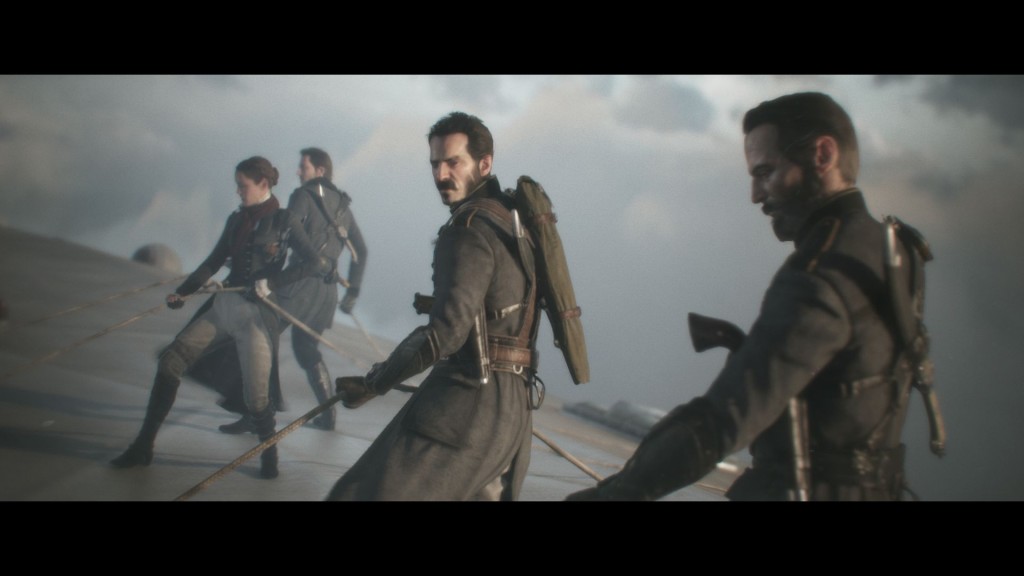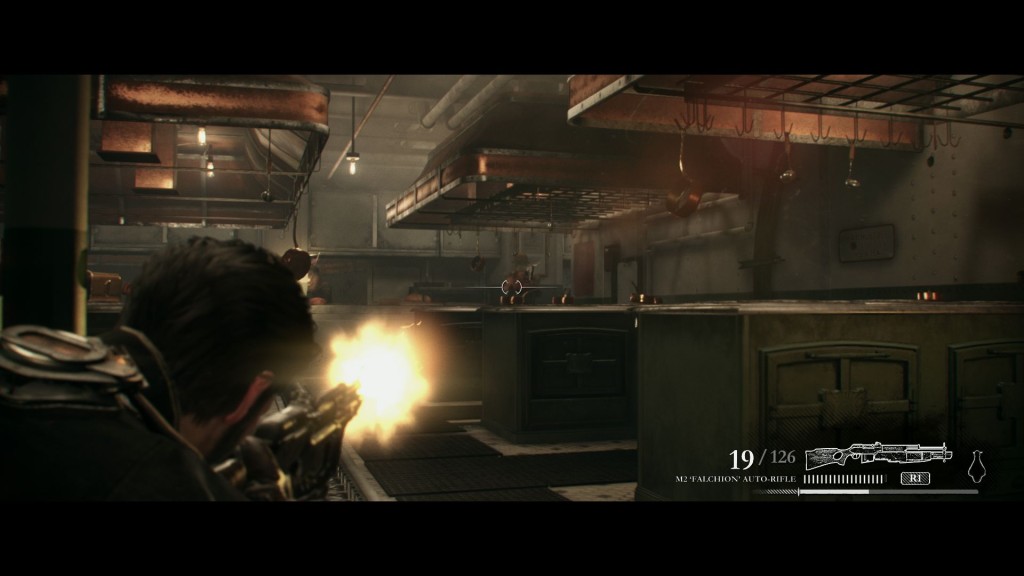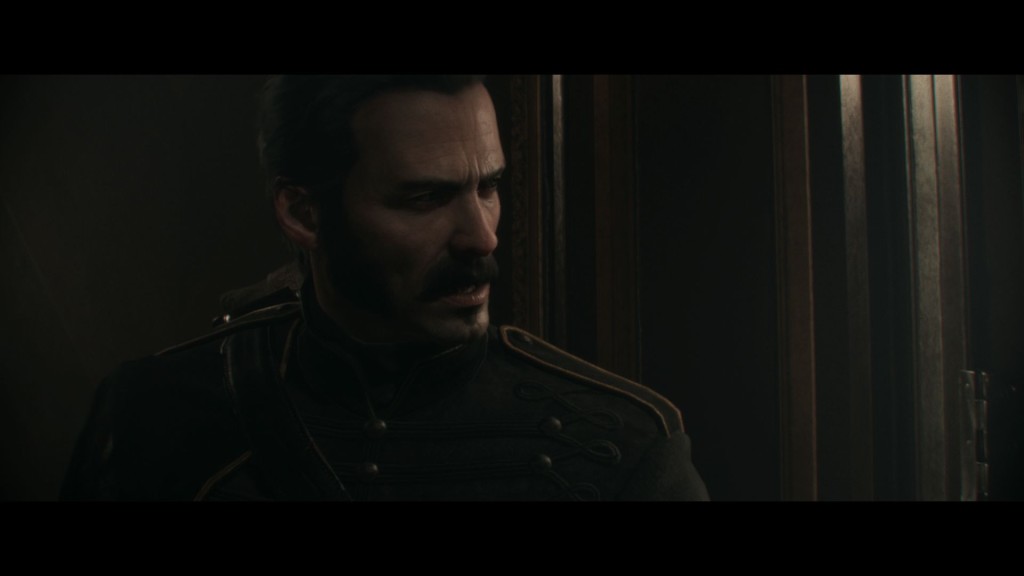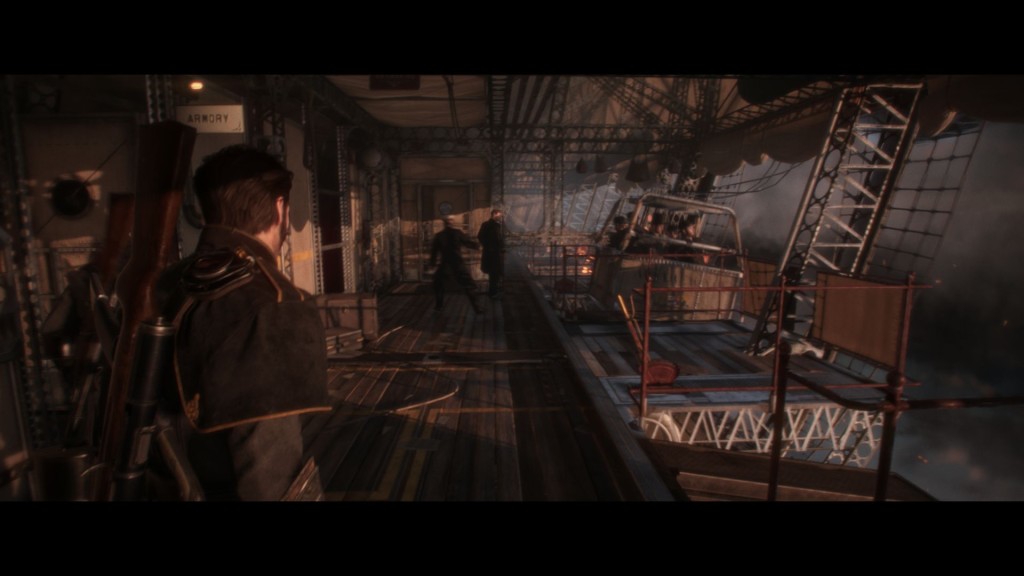
As the line between games and movies continually gets more blurred, it was eventually bound to happen: a game that took things too far. The Order: 1886 should serve as the point when a game takes away too much control and player interaction in an effort to produce a more cinematic product. On the technical side, the game succeeds wildly, and it wouldn’t be a stretch to say that it’s the most graphically impressive game I’ve ever played (especially on a console). Unfortunately, there isn’t enough actual fun to be had to recommend the title for much else beyond its presentation.
On the surface, The Order: 1886 is quite intriguing. It imagines an alternate history when King Arthur’s Knights of the Round Table still exist in a steampunk version of Jack-the-Ripper-era London. With a setup this good, it seems almost impossible not to craft an exciting adventure, and yet The Order falls flat. The characters aren’t interesting, and the main struggle doesn’t seem to hold much weight; in fact, there were many scenes that I found to be outright boring. For a linear action game to remain exciting, there need to be some big set-piece moments that leave the player in awe long after they’ve passed, and there were none of those present here. There are also far too many threads that don’t seem to resolve, even by the end of the game, leaving you with an unsatisfied taste while the credits roll.

The gameplay of The Order almost exclusively consists of third-person cover-based shooting galleries which, to the game’s credit, are executed competently. The shooting does feel good, but it lacks a strategic element present in other games of the genre. Enemies are almost always in a cone in front of the player, and the only real enemy variation comes in the form of one enemy that rushes the player with a shotgun. Mainly you find yourself taking cover and popping shots for wave after wave of enemy until the game deems enough have been killed to let you forward, and after a series of cut scenes, you’ll do it again. The difficulty ramp comes solely in increasing the number of enemies per encounter, and feels artificial and frustrating near the end.
Most of the weapons in The Order are of the garden-variety pistol-rifle-shotgun realm, but the game does have a few standouts. Notably, there is a gun that fires bolts of lightning, which handles poorly, and a gun that fires a mist of thermite with the primary fire and a spark to ignite the cloud with the secondary one, which handles amazingly. The sad part is that these more inventive weapons are limited to only a few sections of the game, and you are way more often extremely limited in your weapon choices. This trend of The Order, in which the game decides how you should play, is rough, and comes off as very restrictive. From deciding which guns you can use to limiting your walking speed during many sections, it constantly feels like you’re fighting the system instead of working within it.

For all the faults of The Order, one thing that absolutely can not be denied is the level of graphical fidelity and polish the game boasts. Simply put, this game is gorgeous. There are so many moments when my character would end up standing motionless for many seconds simply because I didn’t realize that I was no longer in a cut scene; it is that good. As an argument for what kind of power the current generation of game consoles boasts, The Order makes the best case yet. This is the game I will likely show my non-gaming friends when they are curious as to “how far games have come,” because it is instantly jaw-dropping. While this quality alone isn’t enough to fully recommend the game, it is something that should at least be given a moment for those that really want to have a “next-gen” graphical experience.
Once you finish The Order, there really isn’t much more to do. There aren’t many trophies in the game, and the ones that do exist focus mainly on killing a numer of enemies with a particular gun, which isn’t that interesting. There is also no multiplayer mode. I wouldn’t fault the game on lack of multiplayer inclusion alone if the single-player experience offered enough to satisfy, but in this case the experience feels lacking, and an additional gameplay mode might have given me a reason to stick around.

I didn’t completely hate The Order, but I wanted to like it so much more than I did. The premise is amazing, the presentation is stunning, and the gameplay style has proven to give rise to some excellent games in the past. In this case, though, the total is less than the sum of its parts. It feels like The Order: 1886 is better viewed as a movie than a game, and this movie just isn’t that compelling. I hope that it can serve as a cautionary tale for the industry: we want games that focus on the things that games do best, not ones that try to emulate the style of other media.
Pros: Stunning graphical presentation, interesting premise
Cons: Repetitive gameplay, limited linear exploration, lackluster story



















